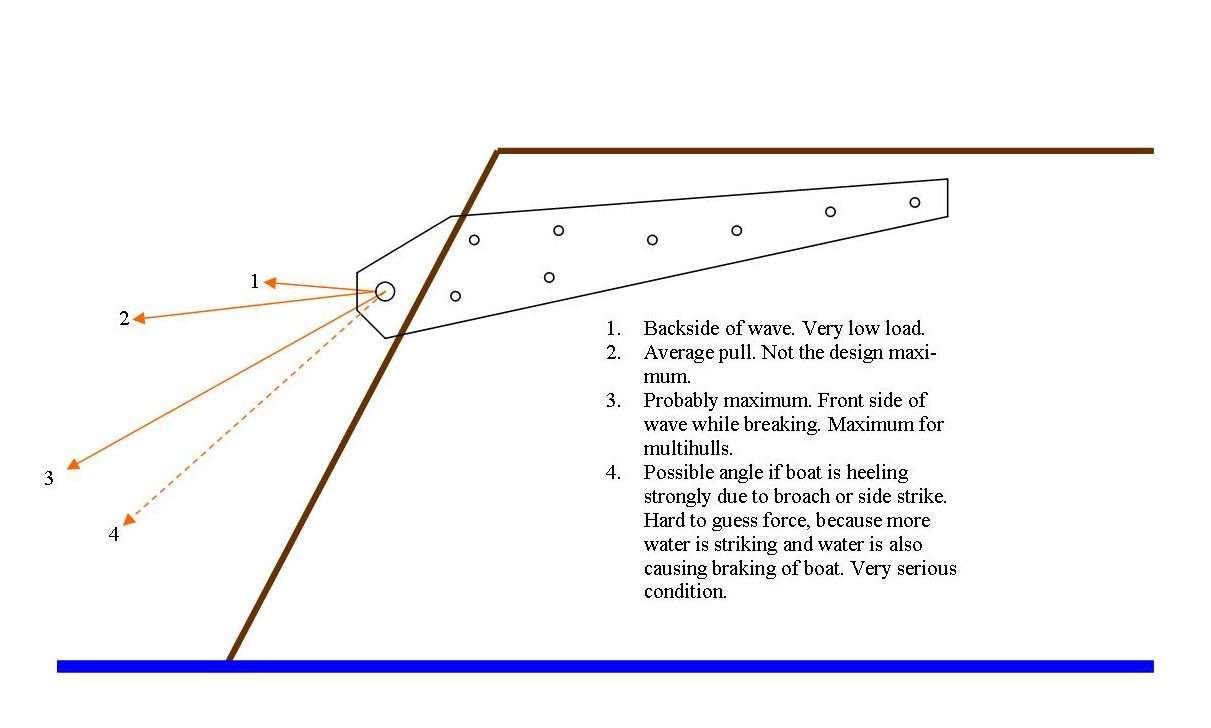Neeves
Well-Known Member
Roger you are too knowledgeable for me 
Might burrs fit on angle grinders?
Jonathan
Might burrs fit on angle grinders?
Jonathan
I'm also ate to the thread.
If you wish to make the existing hole oval in place I would use a burr in a die grinder
I would also have bent the outer projection to closer to the angle of the bridle or fit the chain plate on the flat on the deck with an angled support plate inside bolting through the deck and side of the boat giving a better load pull.
I would also fit a rigging toggle as we do with rigging to allow the pull to not introduce any bending in the chain plate.
I have twin back stays so I would attach to wise toggle to the rigging pin of my backstay chain plated as this is one of the strongest point on the aft of my boat
We had a good look at Tony Curphey’s “chain plates” on “Nicola Deux” at SIBS
I'd rather like to see that, but would probably require to be approved for membership first. And before that, I'd need to get out ocean-sailing again....OCC members will have spotted that Steve Brown has put up an excellent best practice guide to JSD deployment and retrieval.
What strikes me the most about many of these discussions is a distinct lack of a sense of reality.
... I think that when a lateral pull does come on the chain plates, it will tend to be towards the centreline of the boat, rather than away from the centreline, because the arm of the bridle nearest the load will go slack. If I’m right, the lateral load condition will not put a huge tension load on the bolts holding the chain plates.
Have I missed something?
Roger you are too knowledgeable for me
Might burrs fit on angle grinders?
Jonathan
I have great faith in 'engineers' - especially Scots engineers, and I'd really, REALLY like it if one of you could design for me one of those 'Beam me up, Scotty' badges I've seen on telly!

